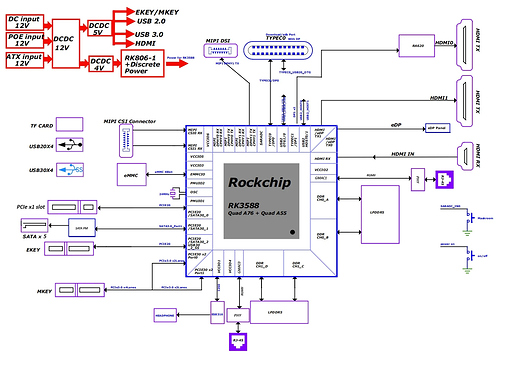Hi,
I was wondering: is there any chance of a Rock 5 ITX variant that has the following changes:
- four PCIe 3.0 lanes going to the M.2 M-key, like the Rock 5B, rather than only two lanes
- instead of a PCIe SATA controller feeding the onboard SATA ports could we have a SATA port multiplier, like a JMB575 connected to one of the RK3588’s SATA/PCIe 2.1 combo interfaces (thus freeing up two 3.0 lanes to go to the M-key above)
- instead of dual 2.5GigE controllers could we instead use the two GMACs on the RK3588
- add a traditional (desktop style) PCIe x1 slot connected to one of the RK3588’s SATA/PCIe 2.1 combo interfaces
This would fit my use case of a desktop and media station that has a PCIe tuner card installed alongside a fast SSD with some SATA hard disks for bulk storage and a SATA optical drive. I may be the only one interested in such a board though 


